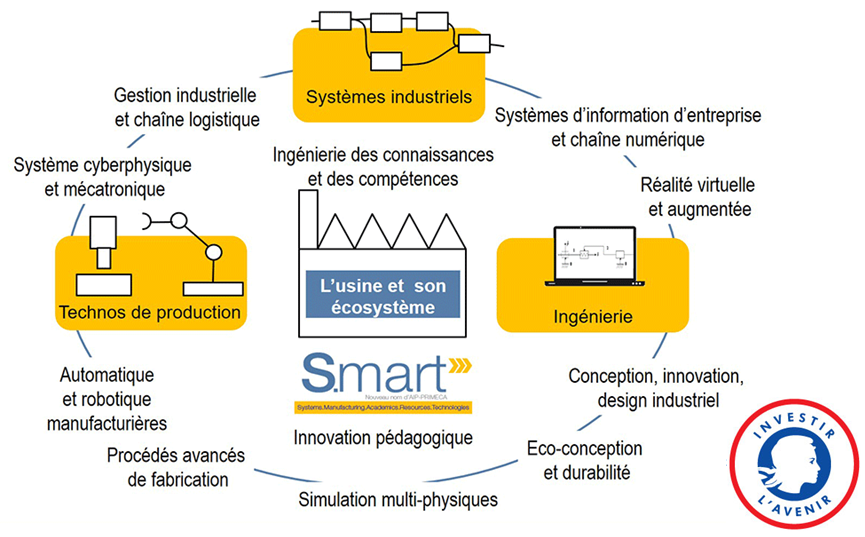ET-LIOS, a hybridisation project for higher education training dedicated to the Industry of the Future
This project benefits from State aid managed by the National Research Agency under the Investments for the Future programme under reference ANR-20-NCUN-009.
Within the framework of the higher education training PIA Hybridisation call for proposals, the ET-LIOS project 'Degree-level technological education open for a competitive and sustainable industry of the future', led by a consortium from the scientific interest group S.mart (former AIP-PRIMECA network), won, and started on 1 November 2020. The kick-off meeting took place on 29 January 2021 in the presence of Mireille Brangé, NCU/ANR action manager, and Xavier Sau, ANR scientific project manager.
For 18 months, the ET-LIOS project will develop and network a digital infrastructure for the virtualisation of software solutions. The infrastructure will also host educational content produced to serve scientific and technological training. This educational content is structured into thematic modules that meet training needs as regards the Industry of the Future, with the objective of understanding and mastering technologies in a competitive and sustainable manner.
As part of this project, the ambition is to pool the experience acquired in the various member establishments of GIS S.mart during the Covid-19 period in terms of distance education and continuity of training in the technological and scientific fields, particularly for the subjects of the Industry of the Future such as:
- 3D design-simulation-prototyping;
- Advanced manufacturing and metrology;
- E-Maintenance of cyber-physical production systems;
- Digital twin and virtual commissioning of automated production systems;
- Smart systems and multiphysical modelling;
- Sustainable and responsible engineering.
The main objective of the project is to provide suitable platforms and resources for a hybridisation of scientific and technological teaching or even, if the evolution of the health situation requires it again, a complete switch to virtual. The specifics of technological education and the need to access industrial machines and equipment make this challenge even more crucial and impactful in order to retain the teaching time that we consider essential on technological resources, while providing the time required for remote initiation, preparation and feedback.
The educational modules call on the expertise and experimentation of members of the S.mart community. The move from proofs of concept (resulting from the Covid-19 period of spring 2020, or having benefited from previous projects within S.mart) to a broader educational level that can be used by the entire educational community and S. mart educational experts, calls for developments and robustness of content, changes and provision of innovative teaching materials.
Finally, for the record, GIS S.mart (formerly AIP-PRIMECA - s-mart.fr) brings together more than 80 universities, internal establishments and university units as well as public or private engineering schools, with the aim of leading Industry of the Future themes in training, research and innovation at an academic level. This GIS is structured around 10 regional centres administratively hosted by a university or engineering school and associated establishments, with the aim of pooling educational or scientific expertise, technological platforms and software resources in support of higher education training missions (degrees, technology degrees, vocational degrees, master's degrees, integrated preparatory cycles, engineering courses, etc.), technological research work and industrial partnership developments.
URCA, through CReSTIC, is involved in Module D 'Digital Twin and Virtual Commissioning for Automated Production' of sub-project 2 'Structuring, development and deployment of educational content', through the use and the deployment of HOME I/O (virtual home) and FACTORY I/O (virtual factory) software.
Contact: Bernard Riera, bernard.riera@univ-reims.fr
